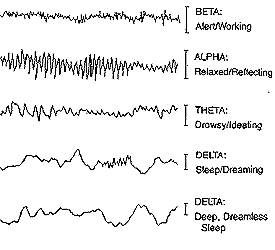The link between the life and behavior of a philosopher, thinker, or creative person and that person’s work is often made, even insisted upon. Usually, the link is made to argue that the ideas or beliefs are flawed because of the person’s behavior — or the opposite, that the expression of the person’s life proves the value of the idea.
What an irony — the link works both ways! Whether we condemn or praise the ideas, those ideas are made the responsibility (or genius) of the person. Or, conversely, if we condemn or praise the person’s behavior, that behavior becomes the basis of the ideas.
So we are trapped having to accept both or none — if we insist on a link.
More likely, and more realistically, there is no absolute link because there is no new idea, nor is there any new personality or new behavior.
We skirt the edge of validity in reviewing forms of expression and what a given society will look like socially or technologically based on its values. Appearance involves historical or accidental elements that simply distinguish one era from another, one culture from another. New ideas are not channeled from the dead and morphed upon arrival into some human receptacle that will express the ideas. Rather, old ideas are textured by the atmosphere in which they arrive. Every era is a modernity to the ideas of the past. Through the prism of the moment is applied the myriad factors of what is called “the world.”
But the nuances of expression over time does not mean that there is no link between existence and expression. Ideas are the epiphenomena of mental activity, which is in part a physical and physiological foundation for our thoughts. The mind’s complexity will probably never be unraveled. Why should it be except to control it, meaning to be controlled by others? And that control would itself be on behalf of a particular cultural, societal or political intent.
To “get along” in the modern world, we are resigned to tolerance, which post-modern critic Slavoj Zizeck, among others, labels a Western conceit by which another idea or belief is grudgingly allowed to exist because it is inconvenient to destroy it. Those who tolerate seldom scrutinize their own ideas as valid because they constitute the cultural and social dominance or majority — or imagine that they should be.
When we hear philosophical arguments made today as if they are new, we almost have to filter them through the clouded atmosphere of modern times.
We have little experience of what material conditions affected our best-thinking ancestors. And yet we can identify those trains of thought so well. But how can we ever apply them to better our lives if our identification with modern society is so strong?
This is the prime reason that solitude and silence are essential to our well-being — physical health and mental equanimity. Despite the many relaxation techniques trumpeted today, they have no ancient context, no continuity other than name and form, specifically if we use them only to postpone value-making decisions or to allay stress just enough that we are recovered for the next day’s rat race.
In this roundabout way we can see that the links between behavior and ideas are authentic if we are able to understand the context of the person’s life. Art is a combination of a complex of mental interchanges — among which is simply personality, that tightened bundle of heredity, environment, and life circumstances. But such an understanding is still a tool, not a judgment.
The best art, like the best ideas, are anonymous, and come to us over the centuries as a perennial wisdom, self-effacing and deeply resonant, like a deep still pool of water undisturbed from which any can drink. Such is Jung’s collective unconscious. Such is the tradition of the spirituals who did not write anything, or reputedly did so but probably did not: Buddha, Lao-tzu, Jesus, and the mystics and hermits whose works are now ashes of the great fire once burning. Even the wisdom philosophers who wrote, and wrote a great deal, were only trying to express what they could barely retain.
We can read as much as we can, but without changing our environment and behavior, little will be accomplished. We can identify ourselves with the dead and the past, but until we also understand the tenuous link between behavior and expression, we are apt to make overstatements and to misunderstand the plight of the many ignorant of the modern world. This is why, instead of tolerance, we must practice indifference. Ideas, beliefs, opinions, ideologies, must be objects of indifference to us. We only see the person and the circumstances of their plight, their disposition, whatever animates them, be it poison or nectar, for we only what to understand.
The slender thread that links us to wider reality is more important than anything we think or dream, anything in our environment that impedes us. We must be scrupulous not to obscure our view of it, for understanding is a boon to wisdom. If we merely tolerate, we are consumed with trivial decisions, rankings, hierarchies to construct and maintain, pride to disencumber. Through indifference, we actually remain linked to reality but not bound to its vicissitudes.

 We know that brain waves reflect the brain status of any given moment. For adults, the delta and theta waves are produced during sleep. The awakened state is reflected in alpha waves: relaxed but alert. Beta waves dominate regular waking functions, from interested attention to focus to intensive to stressful.
We know that brain waves reflect the brain status of any given moment. For adults, the delta and theta waves are produced during sleep. The awakened state is reflected in alpha waves: relaxed but alert. Beta waves dominate regular waking functions, from interested attention to focus to intensive to stressful.